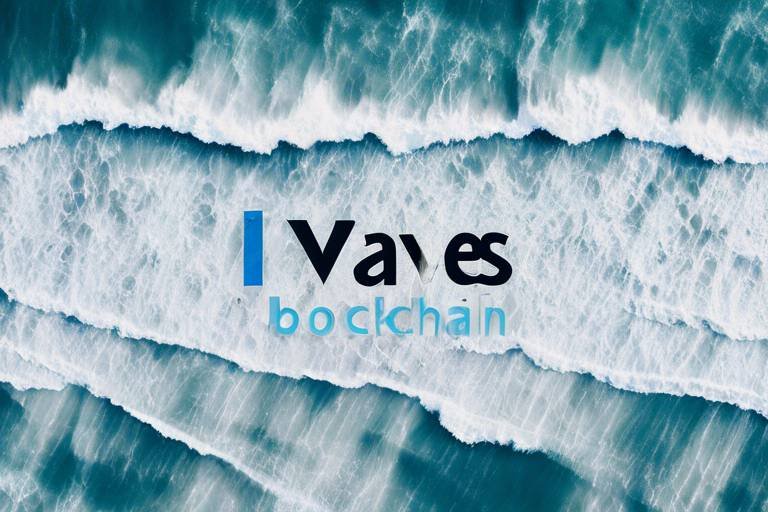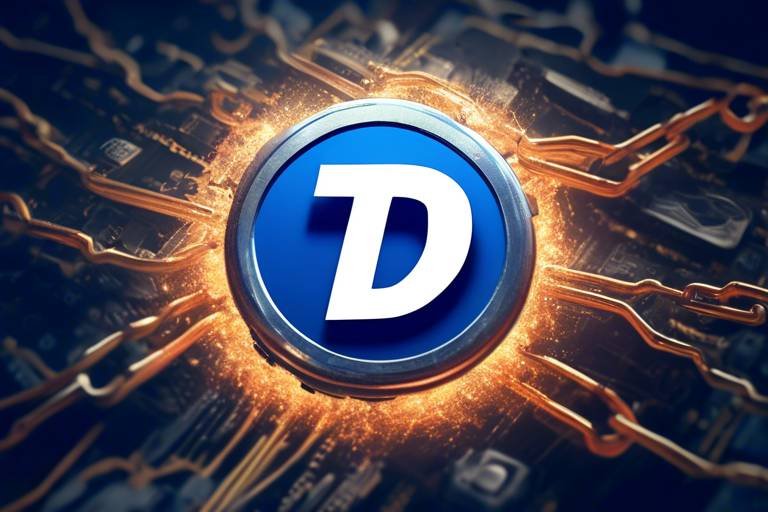Radix - The Next Generation of DeFi
Welcome to the future of decentralized finance! Radix is not just another player in the DeFi arena; it’s a revolutionary platform that aims to redefine how we interact with financial services. Imagine a world where transactions are seamless, secure, and affordable. Radix is designed to make that vision a reality, providing users with an environment that is both user-friendly and highly efficient. Whether you're a developer looking to build the next big decentralized application (dApp) or a user seeking to engage with DeFi in a straightforward manner, Radix has something unique to offer.
What sets Radix apart from other DeFi platforms is its commitment to scalability and security. In a landscape where many platforms struggle with congestion and high fees, Radix employs cutting-edge technologies to ensure that users can transact without the usual headaches associated with blockchain networks. With its innovative approach, Radix is not just keeping up with the rapid evolution of DeFi; it is leading the charge into a new era of financial possibilities.
As we delve deeper into the features and benefits of Radix, you'll discover how its novel consensus mechanism, high throughput, and low transaction costs create an ecosystem that is not only efficient but also accessible to everyone. The platform's emphasis on community governance ensures that users have a voice in shaping its future, making Radix a truly decentralized project.
So, are you ready to explore the innovative features of Radix? Let's dive in and see how this platform is poised to transform the DeFi landscape forever!
- What is Radix? Radix is a decentralized finance platform that simplifies and enhances the DeFi experience.
- How does Radix ensure security? Radix incorporates advanced security protocols and regular audits to protect users' assets.
- Can developers build on Radix? Yes, Radix provides a comprehensive toolkit for developers, including easy-to-use APIs and documentation.
- What makes Radix different from other DeFi platforms? Radix stands out due to its scalability solutions, low fees, and community-driven governance.

What is Radix?
Radix is a decentralized finance platform that aims to simplify and enhance the DeFi experience by providing a secure, scalable, and user-friendly environment for developers and users alike. Imagine a world where financial transactions are not only quick and easy but also incredibly safe and transparent. That’s exactly what Radix offers! By leveraging cutting-edge technology, Radix is designed to eliminate the complexities often associated with traditional finance and other DeFi platforms.
At its core, Radix focuses on three major pillars: security, scalability, and user experience. This trifecta ensures that both developers and users can engage with the platform confidently. Whether you’re a seasoned developer or a newcomer to the crypto space, Radix provides a welcoming environment that encourages exploration and innovation.
One of the standout features of Radix is its commitment to decentralization. Unlike many platforms that still rely on centralized components, Radix operates on a fully decentralized model, which means that no single entity has control over the network. This not only enhances security but also fosters a sense of community among users. The platform is designed to empower individuals, allowing them to take control of their financial assets without the need for intermediaries.
To further illustrate the advantages of Radix, let's take a look at some of its key features:
- User-Friendly Interface: Radix offers an intuitive interface that makes it easy for users to navigate the platform and perform transactions.
- High Throughput: Thanks to its innovative architecture, Radix can process thousands of transactions per second, making it one of the fastest DeFi platforms available.
- Low Transaction Costs: Radix minimizes fees, allowing users to engage in DeFi activities without worrying about exorbitant costs eating into their profits.
In summary, Radix is not just another DeFi platform; it represents a revolution in how we think about finance. By prioritizing security, scalability, and user experience, Radix sets itself apart as a leader in the decentralized finance space. As the DeFi landscape continues to evolve, platforms like Radix are paving the way for a more accessible and equitable financial future.

Key Features of Radix
Radix is not just another name in the crowded world of decentralized finance; it’s a game-changer that brings a plethora of innovative features to the table. At its core, Radix is designed to enhance user experience while ensuring security and scalability. One of the standout features is its novel consensus mechanism, which allows for rapid transaction processing without sacrificing security. This means that users can enjoy a seamless experience, whether they are trading, lending, or borrowing within the ecosystem.
Another key aspect of Radix is its ability to handle high throughput. Unlike many traditional DeFi platforms that struggle with congestion during peak times, Radix employs cutting-edge technology to maintain low transaction costs and high efficiency. Imagine a bustling highway during rush hour; Radix acts as the intelligent traffic management system that keeps everything flowing smoothly, ensuring that transactions are processed quickly and cost-effectively.
One of the most exciting features of Radix is its approach to scalability. With the increasing number of users and applications in the DeFi space, scalability is crucial. Radix implements innovative solutions that allow it to manage a growing volume of transactions without compromising on speed or security. This is particularly important for developers looking to build robust applications that can handle real-world demands.
The scalability solutions employed by Radix are nothing short of revolutionary. For instance, it utilizes sharding technology, which enables the platform to process multiple transactions simultaneously. This significantly increases its capacity and efficiency compared to traditional blockchain networks. Think of sharding as dividing a large task into smaller, manageable pieces, allowing for faster completion without overwhelming the system.
In addition to sharding, Radix features a layered architecture. This architecture separates different functionalities, allowing for seamless updates and enhancements without disrupting the overall system. It’s like having a multi-story building where each floor serves a different purpose, making it easier to renovate one area without affecting the others. This ensures that Radix remains adaptable and sustainable in the ever-evolving DeFi landscape.
To sum it up, Radix is equipped with a suite of features that not only enhance user experience but also set a new standard in the DeFi space. Its unique consensus mechanism, high throughput, and innovative scalability solutions make it a robust choice for both users and developers. As the platform continues to grow, it promises to deliver even more exciting features that will redefine what decentralized finance can achieve.
- What makes Radix different from other DeFi platforms? Radix stands out due to its unique consensus mechanism, high throughput, and innovative scalability solutions, which enhance user experience and efficiency.
- How does sharding technology benefit Radix? Sharding technology allows Radix to process multiple transactions simultaneously, significantly increasing its capacity and efficiency.
- What is the importance of a layered architecture? A layered architecture enables seamless updates and enhancements without disrupting the overall system, ensuring long-term sustainability.
- Is Radix secure? Yes, Radix incorporates advanced security protocols and audits to protect users' assets and data from potential threats.

Scalability Solutions
In the fast-paced world of decentralized finance (DeFi), scalability is not just a buzzword; it’s a necessity. Imagine trying to fill a bathtub with a garden hose – it’s simply not going to keep up with the demand. This is where Radix shines with its innovative scalability solutions that ensure the platform can handle a growing number of transactions without breaking a sweat. By leveraging cutting-edge technologies, Radix delivers a seamless user experience, even during peak usage times.
One of the standout features of Radix’s scalability approach is its use of sharding technology. Think of sharding like slicing a pizza into multiple pieces; each piece can be enjoyed independently, allowing for quicker service and better overall satisfaction. In simpler terms, sharding allows Radix to process multiple transactions simultaneously, significantly increasing its capacity and efficiency compared to traditional blockchain networks. This means that users can execute transactions swiftly, without the frustrating delays often associated with other platforms.
Another significant aspect of Radix’s scalability is its layered architecture. Imagine a well-organized library where different genres of books are neatly categorized; this makes finding what you need so much easier. Radix’s layered architecture separates various functionalities, enabling seamless updates and enhancements without disrupting the overall system. This not only ensures long-term sustainability but also allows Radix to adapt to the evolving needs of the DeFi ecosystem. As the platform grows, it can implement new features and improvements without the risk of downtime or performance issues.
To illustrate the effectiveness of Radix’s scalability solutions, consider the following table that compares Radix with traditional DeFi platforms:
| Feature | Radix | Traditional DeFi Platforms |
|---|---|---|
| Transaction Speed | High | Variable |
| Transaction Costs | Low | High |
| Handling Concurrent Transactions | Excellent | Poor |
| System Updates | Seamless | Disruptive |
In conclusion, Radix’s approach to scalability is not just about keeping up with demand; it’s about setting the stage for a future where decentralized finance can thrive without limitations. By employing sharding technology and a layered architecture, Radix is not only enhancing user experience but also paving the way for a more robust and efficient DeFi landscape. As we continue to witness the evolution of finance, Radix stands out as a beacon of innovation, ready to tackle the challenges that lie ahead.
- What is sharding technology? Sharding technology divides a blockchain network into smaller, more manageable pieces, allowing for simultaneous transaction processing and increased efficiency.
- How does Radix ensure low transaction costs? Radix's innovative architecture and consensus mechanism reduce the resources needed for transactions, resulting in lower fees for users.
- Can developers easily create applications on Radix? Yes! Radix provides a comprehensive toolkit for developers, including user-friendly APIs and extensive documentation.
- What makes Radix different from other DeFi platforms? Radix combines advanced scalability solutions with a focus on security and user experience, setting it apart in the DeFi landscape.

Sharding Technology
Sharding technology is one of the most revolutionary aspects of Radix, setting it apart in the crowded field of decentralized finance (DeFi). Imagine a bustling city where every street is filled with cars trying to reach their destination. If all the traffic is funneled onto a single road, chaos ensues. Now, think of sharding as creating multiple roads, allowing cars to travel simultaneously without congestion. This is precisely what sharding does for Radix— it divides the network into smaller, manageable pieces called "shards," each capable of processing transactions independently.
The beauty of sharding lies in its ability to enhance scalability and efficiency. With traditional blockchains, as the number of transactions increases, so does the time it takes to confirm them. This can lead to frustrating delays and high fees. However, by implementing sharding, Radix can handle a significantly larger volume of transactions at once. Each shard operates like its own mini-blockchain, allowing for parallel processing. This means that while one shard is busy confirming a transaction, others can simultaneously process theirs, reducing bottlenecks and improving overall performance.
Moreover, sharding contributes to the platform's security. Since each shard operates independently, it becomes harder for malicious actors to target the entire network. If one shard encounters an issue, the others can continue functioning smoothly, ensuring the resilience of the entire system. This decentralized approach not only protects users' assets but also fosters trust within the community.
To illustrate the effectiveness of sharding, consider the following table that compares traditional blockchain networks with Radix's sharding approach:
| Feature | Traditional Blockchain | Radix with Sharding |
|---|---|---|
| Transaction Speed | Slower with increased load | Fast, with parallel processing |
| Scalability | Limited by block size | High, due to independent shards |
| Security | Vulnerable to network-wide attacks | Resilient, as shards operate independently |
In conclusion, sharding technology is a game-changer for Radix, enabling it to provide a robust, scalable, and secure platform for DeFi applications. By allowing multiple transactions to be processed simultaneously and enhancing the overall security of the network, Radix is not just keeping pace with the demands of modern finance; it is paving the way for a future where decentralized finance can thrive without the pitfalls of congestion and inefficiency.
- What is sharding technology? Sharding technology divides a blockchain network into smaller, independent segments called shards, allowing for parallel transaction processing.
- How does sharding improve scalability? By processing transactions simultaneously across different shards, Radix can handle a higher volume of transactions without delays.
- Is sharding secure? Yes, sharding enhances security by isolating transactions within shards, making it more difficult for attackers to compromise the entire network.
- Can sharding be implemented in other blockchain platforms? While many platforms are exploring sharding, Radix has developed a unique approach that optimizes its use for DeFi applications.

Layered Architecture
The of Radix is one of its most impressive features, designed to enhance both performance and flexibility. Imagine a cake, where each layer serves a specific purpose, contributing to the overall structure while allowing for individual flavors to shine. In Radix's case, this means that each layer can be developed, tested, and updated independently without affecting the entire system. This modular approach not only improves efficiency but also fosters innovation.
At its core, Radix's architecture is divided into several distinct layers, each responsible for different functionalities. The separation of concerns allows developers to focus on enhancing specific aspects of the platform without the risk of disrupting other components. For instance, one layer might handle transaction processing, while another manages user interfaces or smart contract execution. This design leads to a more robust and adaptable system, capable of evolving alongside the rapidly changing landscape of decentralized finance.
Furthermore, the layered architecture supports seamless upgrades. When new features are introduced or existing functionalities need improvement, developers can implement changes in one layer while the others continue to operate normally. This capability is crucial for maintaining user trust and ensuring that the platform remains reliable and efficient, even during periods of significant development activity.
In addition, the architecture promotes scalability. As the number of users and transactions increases, Radix can easily scale its operations by optimizing specific layers rather than overhauling the entire system. This flexibility is vital in the DeFi space, where demand can surge unexpectedly. By maintaining a well-structured layered architecture, Radix positions itself as a future-proof solution for developers and users alike.
To summarize, the layered architecture of Radix not only enhances performance and scalability but also fosters a culture of innovation and adaptability. It enables developers to create and implement new features with minimal disruption, ensuring that Radix can keep pace with the evolving demands of the decentralized finance ecosystem.
- What is the main benefit of Radix's layered architecture?
The main benefit is its ability to allow independent updates and enhancements to different functionalities without disrupting the overall system, making it more efficient and adaptable.
- How does layered architecture contribute to scalability?
Layered architecture allows Radix to optimize specific layers to handle increased transactions, rather than requiring a complete system overhaul, thus enhancing scalability.
- Can developers easily implement changes in Radix?
Yes, the modular nature of the layered architecture facilitates easy implementation of changes, allowing developers to focus on specific layers without affecting others.

Security Measures
In the ever-evolving world of decentralized finance, security stands as a cornerstone of trust and reliability. Radix recognizes this paramount need and has implemented a suite of advanced security measures designed to protect users' assets and data from potential threats and vulnerabilities. After all, in a digital landscape where assets can be transferred in a blink of an eye, ensuring the safety of those transactions is not just important—it’s essential.
One of the key aspects of Radix's security framework is its use of cryptographic protocols, which serve as a digital fortress around user data. These protocols ensure that every transaction is encrypted, making it nearly impossible for malicious actors to intercept or alter the data being exchanged. Think of it like sending a message in a sealed envelope; even if someone gets their hands on it, they won’t be able to read its contents without the key.
Moreover, Radix undergoes rigorous security audits by third-party experts. These audits are crucial as they help identify potential vulnerabilities before they can be exploited. By regularly assessing their systems, Radix not only fortifies its defenses but also builds trust within its community. Users can feel confident knowing that their assets are safeguarded by a platform that prioritizes security as much as innovation.
Additionally, Radix employs a multi-layered security approach that includes:
- Decentralized Identity Verification: This feature ensures that only authorized users can access certain functionalities, thereby minimizing the risk of unauthorized access.
- Real-Time Monitoring: Continuous monitoring of the network allows for the immediate detection of suspicious activities, enabling swift action to mitigate potential threats.
- Bug Bounty Programs: By incentivizing ethical hackers to identify and report vulnerabilities, Radix fosters a proactive security culture that continually enhances its defenses.
In conclusion, Radix's commitment to security is evident through its comprehensive measures and proactive strategies. As the DeFi landscape continues to grow, platforms like Radix are leading the charge in ensuring that users can engage in financial activities with peace of mind. With a robust security framework in place, Radix not only protects its users but also paves the way for a more secure and trustworthy decentralized finance ecosystem.
Q1: What makes Radix different from other DeFi platforms in terms of security?
A1: Radix employs advanced cryptographic protocols, regular security audits, and a multi-layered security approach, ensuring that user data and assets are protected from potential threats.
Q2: How does Radix ensure that its security measures are up to date?
A2: Radix conducts regular third-party audits and has a bug bounty program that encourages ethical hackers to find vulnerabilities, ensuring continuous improvement of its security measures.
Q3: Can users participate in enhancing Radix's security?
A3: Absolutely! Users can contribute by reporting any vulnerabilities they discover through the bug bounty program, allowing them to play an active role in the platform's security.

Developer-Friendly Environment
Radix is not just another name in the decentralized finance (DeFi) space; it is a game-changer for developers. Imagine stepping into a world where building decentralized applications (dApps) feels like a walk in the park rather than a trek through a dense forest. That's what Radix offers—a comprehensive toolkit designed specifically to empower developers and make their lives easier. With user-friendly APIs and extensive documentation, Radix creates an environment that fosters innovation and encourages creativity.
One of the standout features of Radix is its commitment to providing a seamless development experience. Developers can dive straight into creating their applications without getting bogged down by complex processes. The platform's architecture is designed to be intuitive, allowing developers to focus on what truly matters: building amazing financial products. With Radix, you can expect:
- Easy Integration: The APIs are straightforward, making it easy for developers to integrate with the platform.
- Rich Documentation: Comprehensive guides and tutorials help users navigate through the development process effortlessly.
- Community Support: A vibrant community of developers is always ready to lend a hand or share insights.
Moreover, Radix supports advanced smart contract capabilities, allowing developers to build complex dApps with confidence. Think of it as having a powerful toolbox at your disposal, where each tool is specifically designed to help you construct the financial applications of tomorrow. This functionality not only enhances the reliability of the applications but also ensures security—two critical aspects in the DeFi landscape.
What truly sets Radix apart is its focus on decentralized governance. Developers and users alike are encouraged to participate in the decision-making processes that shape the platform's future. This level of involvement ensures that Radix evolves based on the needs and desires of its community. It’s like being part of a cooperative where every voice matters, making the development environment not just friendly but also collaborative.
In conclusion, the developer-friendly environment of Radix is a crucial factor that positions it as a leader in the DeFi space. By simplifying the development process and fostering community engagement, Radix is not just building a platform; it’s building a movement that empowers developers to innovate and create groundbreaking financial applications.
Q1: What makes Radix different from other DeFi platforms?
A1: Radix stands out due to its innovative scalability solutions, low transaction costs, and a developer-friendly environment that simplifies the creation of decentralized applications.
Q2: Is Radix secure for developers and users?
A2: Yes, Radix incorporates advanced security protocols and conducts regular audits to protect users' assets and data from potential threats.
Q3: How can developers get started with Radix?
A3: Developers can start by accessing the comprehensive documentation and APIs provided by Radix, which guide them through the development process.
Q4: Can users participate in the governance of Radix?
A4: Absolutely! Radix emphasizes community involvement, allowing users to take part in decision-making processes that affect the platform's development.

Smart Contract Capabilities
When it comes to decentralized finance, smart contracts are the backbone of innovation and functionality. Radix takes this concept to the next level by offering a robust framework that allows developers to build sophisticated decentralized applications (dApps) with ease. Imagine having the power to create financial solutions that operate automatically and transparently, without the need for intermediaries. That’s the magic of smart contracts on Radix!
One of the standout features of Radix’s smart contract capabilities is its user-friendly programming model. Unlike traditional blockchain platforms that often require extensive knowledge of complex coding languages, Radix simplifies the process. Developers can utilize a more intuitive syntax, which not only reduces the learning curve but also accelerates the development process. This means that even those with limited programming experience can dive into the world of DeFi and create their own applications.
Furthermore, Radix ensures that these smart contracts are secure and reliable. The platform employs rigorous testing and auditing protocols, which help to identify and mitigate any vulnerabilities before they can be exploited. This focus on security is crucial in the DeFi space, where the stakes are high, and any breach can lead to significant financial losses. With Radix, developers can have peace of mind knowing their smart contracts are built on a solid foundation.
Additionally, Radix supports a wide range of smart contract functionalities, enabling developers to implement various financial products and services. Here are a few examples of what can be achieved:
- Automated Market Makers (AMMs): Create liquidity pools that allow users to swap tokens seamlessly.
- Yield Farming: Design complex strategies for users to earn rewards on their crypto holdings.
- Decentralized Lending and Borrowing: Build platforms where users can lend their assets and earn interest or borrow against their holdings.
This versatility means that the possibilities are virtually endless. Developers can tap into the growing demand for innovative financial solutions, all while leveraging Radix’s powerful smart contract capabilities. As the DeFi landscape continues to evolve, having a platform that supports such dynamic applications is a game-changer.
In conclusion, Radix not only simplifies the process of creating smart contracts but also enhances their security and functionality. This makes it an attractive option for developers looking to make their mark in the DeFi space. As more and more developers flock to Radix, we can expect to see a flourishing ecosystem of dApps that cater to a wide array of financial needs.
Q1: What are smart contracts?
A1: Smart contracts are self-executing contracts with the terms of the agreement directly written into code. They automatically enforce and execute agreements when predetermined conditions are met.
Q2: How does Radix ensure the security of its smart contracts?
A2: Radix employs rigorous testing and auditing protocols to identify and mitigate vulnerabilities in smart contracts before they are deployed on the platform.
Q3: Can anyone create a smart contract on Radix?
A3: Yes! Radix provides a user-friendly programming model that allows both experienced developers and those with limited coding knowledge to create smart contracts easily.
Q4: What types of applications can be built using Radix smart contracts?
A4: Developers can create a variety of applications, including automated market makers, yield farming platforms, and decentralized lending and borrowing services, among others.

Community and Governance
In the world of decentralized finance, community engagement and governance play crucial roles in shaping the future of platforms like Radix. Unlike traditional financial systems where decisions are made behind closed doors, Radix embraces a transparent and inclusive approach. This means that every user has a voice, and their opinions matter in the decision-making process. Imagine a large roundtable where everyone can share their thoughts and ideas—this is the essence of Radix’s governance model.
Radix employs a decentralized governance structure that allows users to participate actively in the evolution of the platform. Through a system of voting and proposals, community members can influence key decisions that impact the ecosystem. This not only fosters a sense of ownership among users but also encourages a vibrant community that is invested in the platform's success. In essence, Radix is not just a platform; it is a community-driven movement.
To facilitate this engagement, Radix provides various channels for communication and feedback, including forums, social media groups, and regular community meetings. These platforms serve as a space for users to discuss potential improvements, report issues, and share innovative ideas. The more active the community, the stronger the platform becomes, creating a virtuous cycle of growth and development.
Moreover, Radix is committed to transparency. Regular updates and reports on governance decisions are shared with the community, ensuring that everyone is informed of the changes and developments taking place. This level of transparency builds trust, which is essential in the DeFi space where skepticism can often arise.
In addition to community participation, Radix offers a reward system for users who contribute to governance activities. By rewarding active participants, Radix not only incentivizes involvement but also cultivates a culture of collaboration and innovation. Users can earn tokens for their contributions, which can be further utilized within the platform, creating a self-sustaining ecosystem.
In summary, the governance model of Radix is a testament to its commitment to community involvement. By empowering users to take part in decision-making processes, Radix not only enhances user experience but also ensures that the platform evolves in a direction that reflects the needs and desires of its community members. This collaborative spirit is what sets Radix apart in the crowded DeFi landscape, making it a truly exciting platform for both users and developers.
- What is the role of the community in Radix? The community plays a vital role in governance, influencing decisions and contributing to the platform's development.
- How can I participate in governance? Users can participate by voting on proposals and engaging in discussions on various platforms provided by Radix.
- Are there rewards for community participation? Yes, Radix offers a reward system for users who contribute to governance activities, incentivizing active participation.
- How does Radix ensure transparency? Radix shares regular updates and reports on governance decisions, keeping the community informed and engaged.

Future of Radix
The is not just promising; it's a thrilling journey into the realms of decentralized finance (DeFi) that could change the way we think about financial transactions. As the DeFi landscape continues to evolve, Radix stands as a beacon of innovation, ready to tackle the challenges of scalability, security, and user experience. With its unique features and a dedicated community, Radix is positioned to become a cornerstone in the DeFi ecosystem.
One of the most exciting aspects of Radix is its commitment to continuous improvement. The development team is constantly working on enhancements that will not only refine existing functionalities but also introduce groundbreaking features. Imagine a world where financial transactions are not only faster but also more secure and user-friendly. That’s the vision Radix is working towards, and it’s one that is increasingly becoming a reality.
As we look ahead, several key factors will shape the future of Radix:
- Expanding Ecosystem: With a growing number of projects and partnerships, Radix is set to expand its ecosystem significantly. This will provide users with a wider array of financial tools and services.
- Enhanced User Adoption: As more users become aware of the benefits of decentralized finance, Radix's user-friendly interface and robust features are likely to attract a broader audience.
- Innovative Solutions: The platform is committed to developing innovative solutions that address the ongoing challenges in the DeFi space, such as high gas fees and slow transaction times.
Moreover, Radix's focus on community and governance will play a crucial role in its future. By empowering users to participate in decision-making processes, Radix fosters a sense of ownership and collaboration. This community-driven approach not only strengthens the platform but also ensures that it evolves in alignment with the needs and desires of its users.
In addition to these factors, Radix is also exploring integration with other blockchain networks, which could pave the way for cross-chain functionality. This would allow users to transact seamlessly across different platforms, enhancing the overall DeFi experience. Such integrations could potentially lead to a more interconnected financial ecosystem, where users can leverage the strengths of various networks.
As we forge ahead, Radix's commitment to education and outreach will be vital. By providing resources and support to both developers and users, Radix aims to demystify DeFi and encourage broader participation. Imagine a future where anyone, regardless of their technical background, can engage with decentralized finance effortlessly. Radix is working diligently to make this vision a reality.
In conclusion, the future of Radix is filled with potential and excitement. With its innovative features, strong community focus, and commitment to continuous improvement, Radix is not just another DeFi platform; it’s a movement towards a more inclusive and efficient financial system. As we move forward, one thing is clear: the journey has only just begun, and the possibilities are endless.
Here are some common questions about Radix that may help clarify its purpose and functionality:
- What makes Radix different from other DeFi platforms? Radix stands out due to its unique consensus mechanism, scalability solutions like sharding, and a user-friendly interface designed for both developers and users.
- How does Radix ensure security? Radix employs advanced security protocols and regular audits to protect user assets and data from potential threats.
- Can developers easily create applications on Radix? Yes! Radix provides a comprehensive toolkit, including easy-to-use APIs and documentation, making it easy for developers to build decentralized applications.
- How can users participate in Radix governance? Users can participate in decision-making processes through community voting and discussions, ensuring that the platform evolves in a way that reflects the community’s needs.
Frequently Asked Questions
- What is Radix and how does it differ from other DeFi platforms?
Radix is a cutting-edge decentralized finance platform that aims to simplify the DeFi experience. Unlike other platforms, Radix focuses on providing a secure, scalable, and user-friendly environment, making it easier for both developers and users to navigate the complex world of decentralized finance.
- How does Radix ensure scalability?
Radix employs innovative scalability solutions, such as sharding technology and a layered architecture. Sharding allows the platform to process multiple transactions simultaneously, while the layered architecture separates different functionalities, enabling seamless updates without disrupting the system.
- What security measures does Radix implement?
Security is a top priority for Radix. The platform incorporates advanced security protocols and conducts regular audits to protect users' assets and data from potential threats. This ensures a safe environment for all transactions and interactions within the platform.
- Is Radix developer-friendly?
Absolutely! Radix provides a comprehensive toolkit for developers, including easy-to-use APIs and thorough documentation. This fosters innovation and encourages the creation of diverse financial applications, making it easier for developers to build on the platform.
- What are the smart contract capabilities of Radix?
Radix supports advanced smart contract functionalities, allowing developers to create complex decentralized applications (dApps) with ease. This capability ensures reliability and security, making it a robust choice for building financial applications.
- How does community involvement work in Radix?
Radix emphasizes community participation and decentralized governance. Users are encouraged to engage in decision-making processes, contributing to the platform's development and future direction, which fosters a sense of ownership and collaboration.
- What is the future outlook for Radix?
With continuous improvements and an expanding ecosystem, Radix is well-positioned to play a significant role in the future of decentralized finance. The platform is committed to providing innovative solutions that meet the evolving needs of users and developers alike.



















